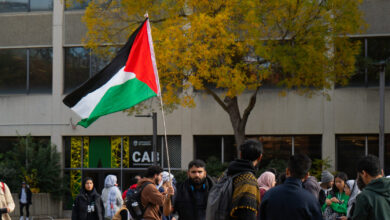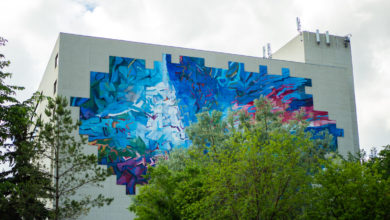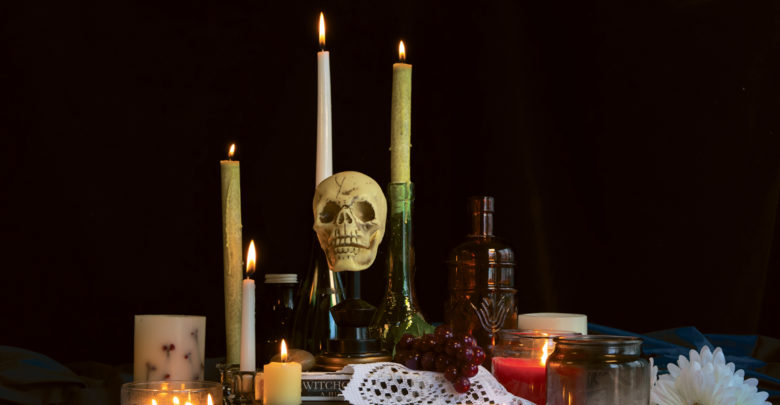 Helen Zhang
Helen ZhangDo you feel a chill in the air around this time of year? Maybe you’ll be walking home sometime this month and turn around, only for the shadows to disappear behind you. Maybe you’ll hear the sound of howling beasts in the night, just a little too close for comfort.
Fear and unease run rampant in October, and other than the changing of the seasons to mark the occasion, images of ghosts, ghouls, and other spooky scary skeletons arise. The most prominent that come to mind are vampires, werewolves, and zombies. These monsters act as manifestations of societal fears. Vampires are undead, blood sucking creatures of the night, and are also used as a commentary on class struggles. Dracula, a nobleman, literally sucks the life out of the peasant class to survive. Zombies are mindless drones that will tear you apart, representing mindless uniformity and violence. Werewolves are the monsters hidden within ourselves and our loved ones, a reminder that your friendly neighbour might be a savage predator in disguise.
Witches are no different, and our deep dark fears of them change and adapt over time to fit our changing perceptions. They have existed for a long time— captivating all areas of pop culture — while being similar to other monsters that reflect societal fears. Witches represent societal expectations of women, and misogynist fears about women’s autonomy and power.
Antiquity had no shortage of witches in literature. Homer wrote about golden-eyed Circe, a witch Odysseus encounters on his voyage back home, who turns any man that steps foot on her island into a pig. Euripedes wrote the tragedy of Medea, a murderous witch who is abandoned by her husband and kills her own children. For Circe, her fear comes from her corruption of battle-hardened men after she’s led them into a false sense of security with her beauty and hospitality. For Medea, her magic is foreign, and therefore strange and bizzare. It’s only after her husband leaves her for another Greek princess that Medea goes mad and commits infanticide, after her that geness is exchanged for normalacy. The underlying fear of these two is the defilement of masculinity, foreign magic, and a descent into madness. Both characters are perversions of “good women,” as Circe uses her feminine beauty and charms to curse men, rather than serve them, and Medea commits the worst crime a mother can: killing her children. Instead of fitting the ancient literary archetype of a good, passive woman, they are evil, active women.
Judeo-Christian belief condemns any kind of occult witchcraft, including soothsaying, omen reading, or spell conjuring in the book of Deuteronomy. While the common idea is the association of the occult to Satanic rituals, this particular verse mentions not allowing one’s sons or daughters to walk through fire, seemingly a reference to a ritual practiced in many ancient cultures, including Greece, India, and China. These kinds of rituals come from cultures that practice different, and often, polytheistic religions. Since Christianity is quite strict about worshipping no other gods, these cultures (and by extension their rituals) are looked down upon and falsely conflated with evil magic.
The most prominent occult biblical figure is the Witch of Endor. In the book of Samuel in the Old Testament, Saul comes to her and asks her to conjure the prophet Samuel to tell him his fortune in the battle to come. She protests that the practice is illegal, but Saul promises her protection. Her story connects witchcraft to necromancy, and communication with the dead.
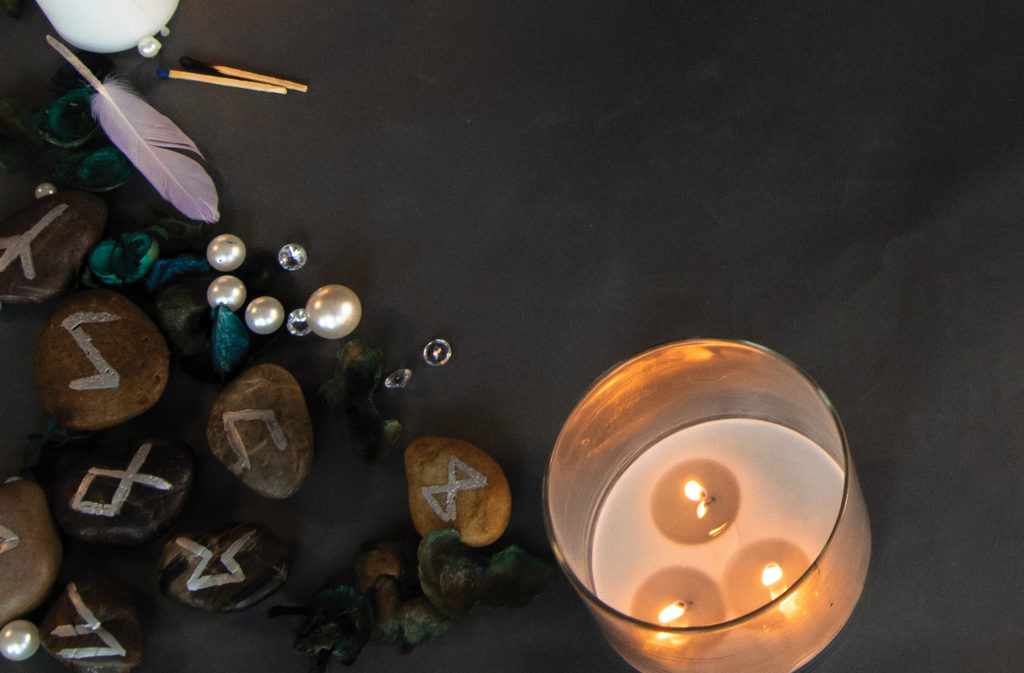
But it was the assumed connection between the occult and the satanic that lead into one of the most sinister periods in human history that once again preyed on vulnerable women. The witch trials of medieval Europe reached their peak from the late 1500s to early 1600s, when the trials which were arguably the deadliest took place in Germany. Many believed at the time that the Holy Roman Empire was experiencing abnormally cold temperatures, leading to crop failure. The people wanted an explanation, and came to the conclusion that it must be witches in consort with the devil. So, under Johann Gottfried von Aschhausen, the Prince-Bishop of Bamburg, and theologian Friedrich Förner, the witch trials began. Nearly 200 documented trials were conducted, and many men, women, and children were accused, arrested, tortured, and executed. The victims were so numerous that an extra firewood preserve was built at the town of Zeil am Main for the burnings.
Witch trials in Europe declined in the late 1600s, but reappeared in America with the infamous Salem Witch Trials. Religious superstition was a part of everyday life for the small Puritan community of Salem, Massachusetts, who believed the devil was constantly working to infiltrate their defenses. So when several young girls began having seizure-like convulsions, the town doctor begged them to name who had bewitched them to behave in such a way. The girls named Tituba, a slave woman in the village. Tituba confessed to witchcraft, but claimed she did not work alone, sending the Massachusetts town into a frenzy. While the victims included some men, it was mainly women who were accused and executed. These women were social outcasts from society, poor beggars, widows, and those who had previous run ins with the law. Intense religious paranoia, mixed with scapegoating of social outcasts, had disastrous consequences.
Witches as social outcasts is still a common theme today. Around Halloween, images of a green-skinned, wrinkly crone with a distractingly large warty nose can usually be found on decorations or trick-or-treat bags. For a creature one is meant to fear, this is a pretty standard design. This image of a wicked witch is human, but just inhuman enough to be uncanny. The green skin is a red flag for any gullible children to stay away, and the ugliness means that no one in their right mind would want to go near anyway. Think the Wicked Witch of The West from The Wizard of Oz.
“Instead of fitting the ancient literary archetype of a good, passive woman, they are evil, active women.”
The “old crone” archetype also points to a witch being the opposite of a socially acceptable woman, that is, young, married, and fertile. These witches tend to be portrayed naked and mumbling in a cave with their cauldrons, like the three Weird Sisters from Macbeth. It was easy to portray witches as unmarried, old hags because it drew inspiration from the most vulnerable people in society and set a precedent for young women to follow. Don’t want to be a wrinkled old crone who lives in a cave and consorts with the devil? Stay in your lane, get married and have kids.
However, not all religions or belief systems adhered to this nasty, misogynistic image. Many polythestic religions had deities who could technically be considered witches. For example, there’s Isis, the Egyptian goddess of motherhood, who resurrects her husband Osiris and protects Ra by casting spells as he travels through the underworld each night. The Norse worshipped Freyja, another fertility goddess who had connections to witchcraft and divination (as well as an awesome feather cloak that let the wearer fly). From Celtic mythology there’s Brighid, patron of healers and magicians, as well as the goddess of the hearth and home. An interesting dichotomy arises here: these goddesses have traits typically associated with femininity like childbirth, fertility, and marriage, but are also skilled in witchcraft and the occult arts. However, they were worshipped as important parts of their respective pantheons and mythologies, whereas other religions tied witchcraft with femininity in the context of conspiring (sexually or otherwise) with the devil. In Christian Europe, traditionally feminine traits were an indication that one was not a witch, and it was the image of an unmarried, childless crone that was associated with witchcraft. But in Pagan pantheons femininity was directly tied to magic and was something to be celebrated and worshipped instead of feared.
Of course, it was the source of this magic that became a debate once Christianity spread across more of the globe. In the middle ages, between the 7th and 15th centuries, Christian missionaries arrived in Scandinavia, and Anglo-Saxons had already partially Christianized Ireland. The main goal of these missionary campaigns were to convert the locals to their religion, but the missionaries couldn’t just dismantle their entire belief systems without significant (and possibly violent) backlash. Therefore, the missionaries came up with a sort of compromise by remixing various Celtic and Norse gods were as saints: for example, Brighid became Saint Brigid. This way, Pagan magic spells became miraculous deeds from the grace of the big G.
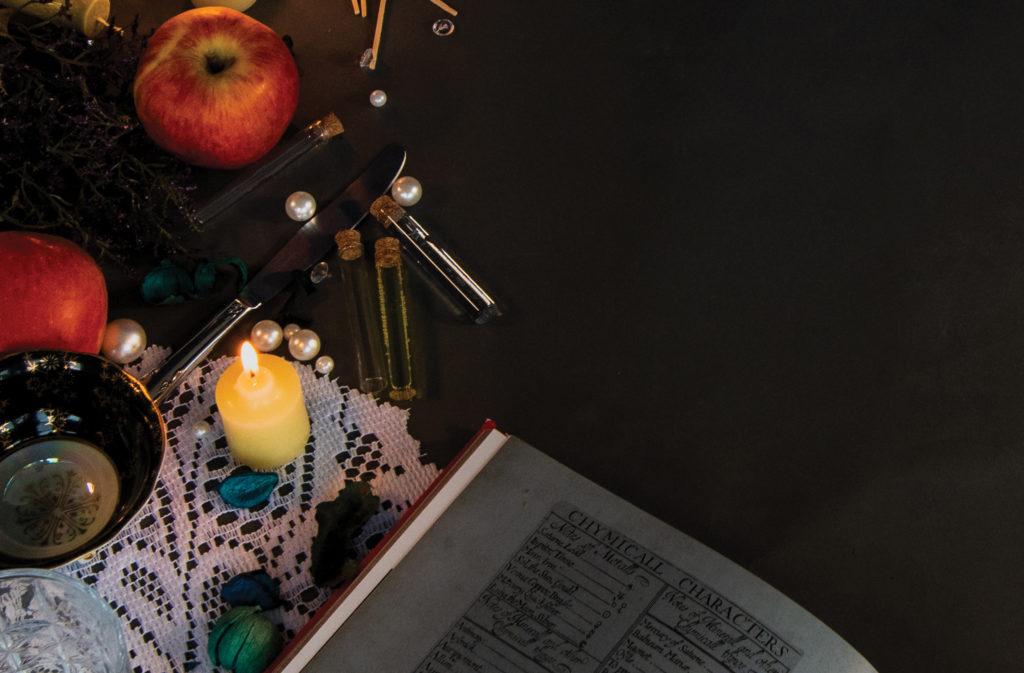
Despite its association with darker parts of history, witchcraft still thrives in the modern day. Modern witches can be found all over the world practicing in different ways. As well, witchcraft itself can mean the practice of pagan and polytheistic religions, and the return to old pre-Christian traditions. Much of modern witchcraft follows Celtic traditions set before Christianization of the UK and Ireland, such as the observance and reverence of nature. As well, the Pagan religion surrounding witchcraft is known as Wicca, while witchcraft itself is more of a spiritual practice.
Deb Vourne, owner of Edmonton’s pagan supply store Where Faeries Live, says that if you asked ten people why they practice Wicca, you’d get ten different answers.
“I personally have been practicing for 26 years,” she says. “[Wicca] is the basis of my spirituality, and since I run a pagan store it’s there on a day by day basis.” As Vourne explains, not all Wiccans practice the same way. “There [are] a lot of flavours and traditions in Wicca. You’re gonna see ones who practice the traditional British wicca, there’s other ones like myself who are Gardenarian, which is actually another British tradition. [There are] lots of sub groups of Wicca.”
Vourne describes Wicca as an earth based-spirituality that honours the Duality, a male god and female goddess. Wicca is in tune with the cycles of the earth, and recognizes eight sabbaths including Yule, Ostara, and Samhain, that celebrate the cycle of seasons. Some practitioners of Wicca also recognize the Horned God and/or Mother Earth, archetypal deities that can be found in different pagan pantheons.
Wicca is a subset of witchcraft, and because it doesn’t have a hierarchy like the Catholic Church, its interpretation and practices vary from person to person. As Vourne said, “You’re going to find people [who] are solitary, who will practice Wicca the way they feel is right, you’ll get people that get together in small groups… and then you’re going to get people who come together as a coven.”
Accusations of witchcraft in the Middle Ages in Christian Europe were a tool of systematic misogyny, but in the modern day it seems the opposite is true. The women-only branch of Dianic Wicca is sometimes known as “Feminist Dianic Witchcraft,” and is politically centered and supportive of feminist movements. Additionally, while this branch of Wicca welcomes all women, there is a strong lesbian prescence in the group. It would seem that as Wicca connects back to that idea of spirituality pre-Christianization, it also harkens back to the connection of magic and femininity as a way of empowering women, especially women who belong to marginalized groups.
“Witches are considered feminist icons for the same reasons they were feared in the past; because they resist the norms of ‘good’ womanhood.”
“Wicca came over to North America in the 1960s. Back in the 1960s the life of women was very different to what we enjoy today.” Vourne explains. “I grew up in the 60’s… women [stayed] at home with their children. You might work until you got married, but then you stayed at home,” Vourne says that the feminist movement was centered around female empowerment at a time when all major religions were patriarchal. “God was a He [in] the church that I grew up in and went to as a teen. Young adult women were not allowed to be ministers, women weren’t allowed to do a lot of things. Wicca, because it honours the female deities, it is considered a matriarchal religion… and the goddess traditions honour the female and the empowerment of the female.”
Pop culture also reflects this shift. Hermione Granger from the Harry Potter series is an example that immediately comes to mind. She was a witch who was at the top of her class, who uses her magic to save the other two heroes on multiple occasions. As a kid, Hermione was my first feminist icon. More recently, the Netflix Original The Chilling Adventures of Sabrina imagines the teenage witch in a grittier retelling. Even if the portrayal of witchcraft is tied to Satanism, Sabrina deals with feminist and queer issues, as the system of magic in the male dominated Church of Night, and Sabrina’s relucance to join such an organization can be interpretted as a metaphor for resistance to patriarchal ideals. Additionally, Sabrina creates a club in her mortal high school to act as a safe space against sexist and homophobic bullying, appropriately titled Wicca: Women’s Intersectional Cultural and Creative Association.
“It would seem that as Wicca connects back to that idea of spirituality pre-Christianization, it also harkens back to the connection of magic and femininity as a way of empowering women, especially women who belong to marginalized groups.”
So where are we now? We may never be able to trace the exact starting point of the concept of witchcraft, but we can see how it has changed over the centuries. In antiquity, people feared the woman as an active agent who trapped, cursed, and murdered men, and in some cases through the use of foreign magic. In the middle ages, witches were those who would practice pagan beliefs, and those who did not live in accordance to the church’s definition of appropriate femininity, in fear that they would lead other Christians astray, which blended into the pop culture green skinned crone who preyed on innocent children. But in the modern day, witches are considered feminist icons for the same reasons they were feared in the past; because they resist the norms of “good” womanhood.
We fear witches because it is dangerous for a woman to have power. In the wake of third wave feminist movements like #metoo and #timesup, misogynistic fears have started to take root once more. In response, witches have become mascots for resistance, women’s empowerment, and anti-patriarchal sentiment. Where they were once symbols of violence and evil, witches are now symbols of empowerment to many.
So when you feel the chill in the air this fall, listen for a cackling on the wind, a silhouette of a woman on a broomstick on the night’s sky, or the smell of cauldron brew. Remember that witches might not be as scary as you think.

